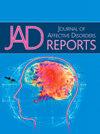Incidence of alexithymia in worsening symptoms and quality of life of Systemic Lupus Erythematosus patients (SLE)
Q3 Psychology
引用次数: 0
Abstract
Background and Objectives
Systemic Lupus Erythematosus (SLE) is a chronic autoimmune inflammatory disease affecting connective tissues, with the potential to impact various organs and systems, thereby limiting the quality of life for affected individuals given that it influences their psychological well-being. Indeed, various stress-inducing factors can lead to alterations in emotional regulation, often presenting, as difficulties in identifying and describing emotions, such as those associated with alexithymia. The aim of the present study is to investigate a potential correlation between the incidence of alexithymia and the worsening of symptoms, subsequently influencing the quality of life in individuals with SLE.
Materials and Methods
For the realisation of the study a sample of 53 Systemic Lupus Erythematosus (SLE) patients, 47 females and 6 males, aged 16–59 years, was examined and compared with a control group (55 healthy subjects, aged 20–65). The group of patients was recruited within the Connetiviti outpatients’ clinic of the UOC (Complex Oparational Unit) of Rheumatology of the Paolo Giaccone University Polyclinic in Palermo, consisting of healthy subjects and/or with known diagnoses identified within non-clinical contexts, chosen randomly (statistical sense) in order to better represent the general population of the territorial context.
Specific psycho-diagnostic measures were administered: Toronto Alexithymia Scale (TAS-20), Response Evaluation Measure (REM-71),Attachment Style Questionnaire (ASQ), Eysenck Personality Inventory (EPI),Symptom Check list (SCL-90), Short Form (SF-36). The selection of these instruments allowed us to assess attachment styles, the presence of maladaptive personality traits, defence mechanisms employed, in order to define any symptoms indicative of a psychiatric diagnosis, and evaluate the quality of life in relation to the severity of the pathology.
Results
Comparisons between the two groups revealed significant differences in the Systemic Lupus Erythematosus (SLE) patients, compared to the control group, about the difficulty in identifying feelings and distinguishing them from the bodily sensations accompanying emotional activation, the use of conversion as a defence mechanism and the production of positive symptoms.
Moreover, in the same group, the difficulty in identifying emotions was correlated with quality of life, since those who have difficulty identifying emotions have a poorer quality of life.
Further analysis regarding the construct of alexithymia, within the patient group alone, revealed a tendency towards somatisation and the use of immature defence mechanisms, including conversion, acting out, projection, dissociation and displacement, highlighting a tendency to act out and project emotional suffering.
Furthermore, there appeared to be difficulty in sharing emotional distress with others, indicating a deep sense of insecurity and a need for approval, as well as an incidence in the perception of the state of illness leading to a decline in the quality of life.
Conclusions
The study demonstrated that difficulties relating to the identification and processing of emotions impact the disease presentation, influencing the worsening of symptoms and, overall, compromising the patients' quality of life.
系统性红斑狼疮(SLE)患者病情恶化时述情障碍的发生率及生活质量
背景和目的系统性红斑狼疮(SLE)是一种影响结缔组织的慢性自身免疫性炎症性疾病,有可能影响各种器官和系统,从而限制患者的生活质量,因为它会影响他们的心理健康。事实上,各种压力诱导因素可能导致情绪调节的改变,通常表现为识别和描述情绪的困难,例如与述情障碍相关的情绪。本研究的目的是探讨述情障碍的发生率与症状恶化之间的潜在相关性,从而影响SLE患者的生活质量。材料与方法为实现本研究,对53例系统性红斑狼疮(SLE)患者进行了检查,其中47例女性,6例男性,年龄16-59岁,并与对照组(55例健康受试者,年龄20-65岁)进行了比较。该患者组是在巴勒莫Paolo Giaccone大学综合诊所风湿病学综合手术室(UOC)的康涅提门诊招募的,包括健康受试者和/或在非临床背景下确定的已知诊断,随机选择(统计意义上),以便更好地代表该地区的一般人群。采用多伦多述情障碍量表(TAS-20)、反应评价量表(REM-71)、依恋类型问卷(ASQ)、艾森克人格量表(EPI)、症状检查表(SCL-90)、简易表格(SF-36)。这些工具的选择使我们能够评估依恋类型,适应不良人格特征的存在,所采用的防御机制,以便定义任何指示精神诊断的症状,并评估与病理严重程度相关的生活质量。结果两组比较发现,系统性红斑狼疮(SLE)患者与对照组相比,在情感识别困难、与伴随情绪激活的身体感觉区分困难、使用转换作为防御机制和产生阳性症状方面存在显著差异。此外,在同一组中,识别情绪的困难与生活质量相关,因为那些难以识别情绪的人生活质量较差。进一步分析述情障碍的结构,仅在患者群体中,揭示了躯体化的趋势和不成熟防御机制的使用,包括转换、表演、投射、分离和位移,突出了表演和投射情感痛苦的趋势。此外,似乎很难与他人分享情绪上的痛苦,这表明有一种强烈的不安全感,需要得到认可,而且对疾病状态的认知导致生活质量下降的情况时有发生。结论:研究表明,与情绪识别和处理相关的困难会影响疾病的表现,影响症状的恶化,并总体上影响患者的生活质量。
本文章由计算机程序翻译,如有差异,请以英文原文为准。
求助全文
约1分钟内获得全文
求助全文
来源期刊

Journal of Affective Disorders Reports
Psychology-Clinical Psychology
CiteScore
3.80
自引率
0.00%
发文量
137
审稿时长
134 days
 求助内容:
求助内容: 应助结果提醒方式:
应助结果提醒方式:


